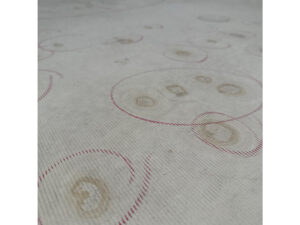Engineered Edge Metals
Overview:
- 4.1 Types Of Commercial Edge Metals.
- 4.2 Testing And Rating Of Engineered Edge Metals.
Table of Contents
Introduction
Roofing edge metals play a crucial role in the longevity and leak-free service life of a roofing system. These metal components, typically made from aluminum or steel, are installed at the edges of a roof to provide structural support and protection from weather, and
direct water runoff to the gutters or drainage system. Edge metals include copping, wall cap, gravel stop, drip edge, and more. They all provide termination and transition points between the roof and building, they provide an aesthetic finish to the buildings exterior, and they are the first line of defense against wind.
Without proper installation of edge metals, a roof system can be vulnerable to water damage and other issues that can lead to costly repairs or full roof replacement. Many roof failures start at the edges, so proper installation and quality materials are important.
We’ll explore the importance of roofing edge metals in ensuring a long-lasting commercial roof, as well as how these components are tested and rated to ensure they will provide your facility proper protection against wind.

4.1 Types of Edge Metals
There are several different types of metal that are commonly used in roof edge metal, each with its own advantages and disadvantages. The most common types of metal used in roof edge metal are:
- Aluminum
- Galvanized Steel
The Most Common Types of Edge Metals
There are several different types of metal that are commonly used in roof edge metal, each with its own advantages and disadvantages. The most common types of metal used in roof edge metal are:
- Coping: Found on the top of parapet walls, it secures the perimeter edges of the membrane to the parapet wall edge and protects the top of the wall from water intrusion.
- Gravel Stop: As the name suggests, it stops gravel from ballasted roof systems from washing off.
- Fascia: Extends down the top wall edge to provide a transition from the wall to the roof and protecting the roof-wall transition from water intrusion.
- Gutters: While not used to secure the edges of membranes, are exempt from ES-1 testing standards which we will learn about next.
4.2 Testing and Rating of Engineered Edge Metals
Roofing edge metals are tested and rated based on their ability to endure wind loads. The standard for edge metal testing are set by ANSI / SPRI ES-1. Other edge metal testing standards are provided by FM Approvals.
ES-1 ensures that edge metals can withstand the proper wind design pressure. Wind design pressures are calculated using building height, building location, wind speed, and building occupancy type. SPRI.org has a calculator Here.
ES-1 checks wind pull on the perimeter edge of low-slope/flat roofing systems. Secondly, it test the ability to resist outward and upward forces. Thus, there are 3 test (RE-1, RE-2, and RE-3) to cover the 3 main edge metals on roofs.

3 types of ES-1 Testing:
RE-1 specifically addresses the testing of edge metal for ballasted and mechanically attached roofing membranes.
RE-2 Tests roof fascia metals.
RE-3 Evaluates roof coping edge systems in 2 directions (horizontal and vertical)
Gutters are excluded from ES-1 testing. Gutters have there own standards under ANSI/SPRI GT-1. GT-1 is gaining ground in many states in 2024. Learn more here.

In addition, roofing manufacturers provide the rating of the material in the product specs. These specs help roofing contractors choose the right materials to withstand the uplift pressures that your roof needs to endure (See Part 2).
Most edge metal is shop fabricated instead of prefabricated by a manufacturer. This is concerning because shop fabricated metal may not undergo proper ES-1 testing and thus may not be suitable for the wind forces in your area. Make sure your roofing contractor is using the appropriate edge metal for your building and location.
Conclusion
In conclusion, edge metals are very important to a commercial roof. When installed properly they provide your building envelope with aesthetically pleasing and functional edges to your roofing system.
Consult your local commercial roofing contractor to ensure that your edge metal is installed correctly and remains well maintained for years to come. Edge metals play a critical role in ensuring a long-lasting and trouble-free roof system. By selecting high-quality edge metals that meet industry standards and conducting regular maintenance, building owners can help to extend the service life of their roof and reduce the risk of costly repairs or replacement due to wind damage in the future.



